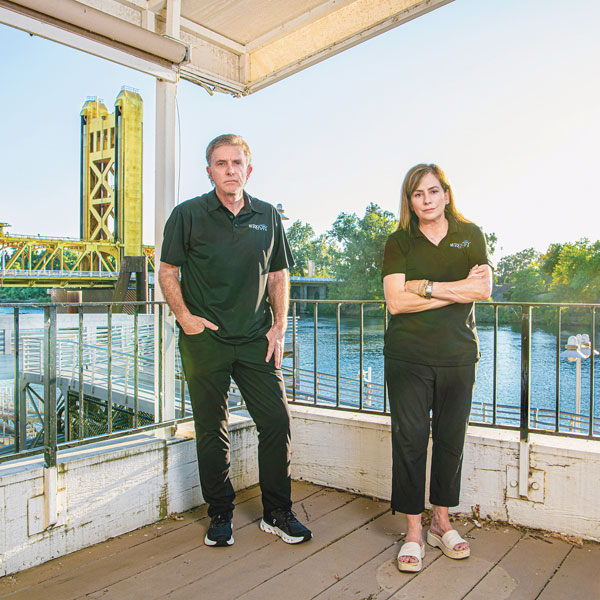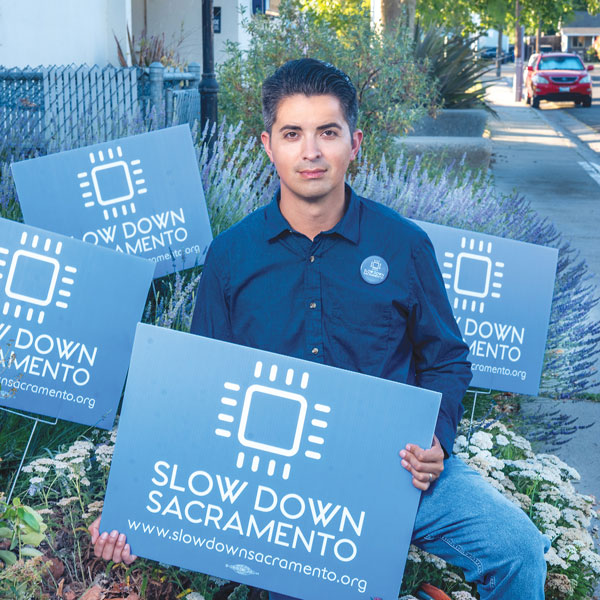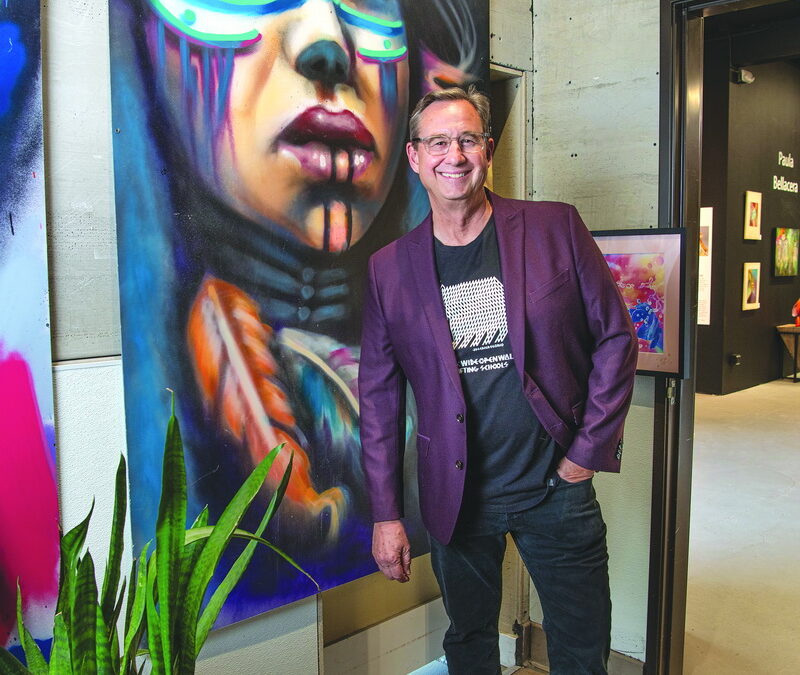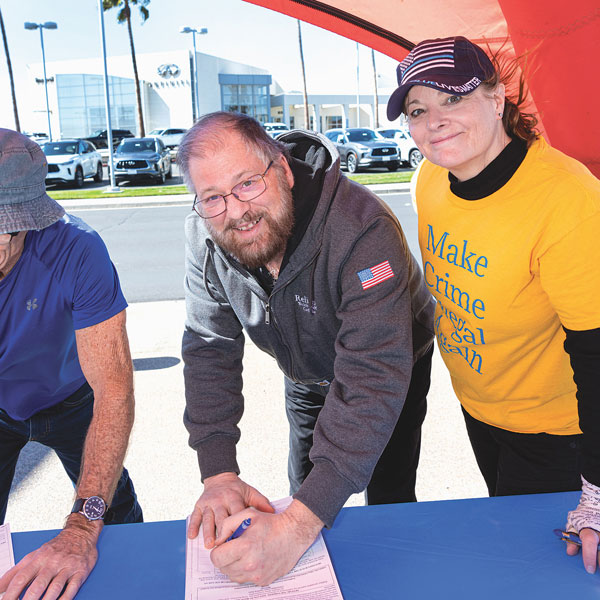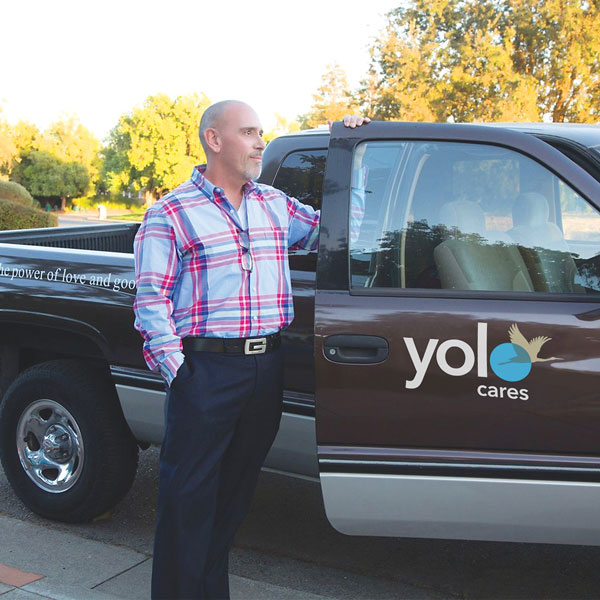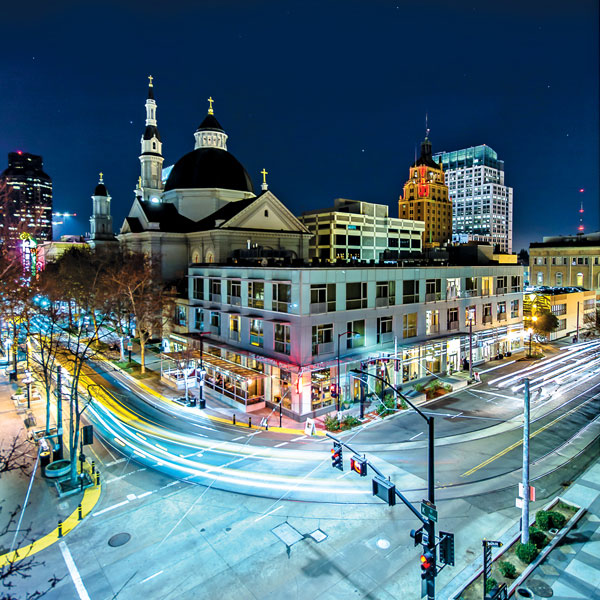
Jul 28, 2024
I’ve met hundreds of small business owners in almost three decades as publisher of Inside Sacramento. Mark and Stephanie Miller, co-owners of Rio City Café, are among my all-time favorites.
I met Stephanie in 2015, when the Millers arrived from Denver to run Rio City. Mark’s father owned the restaurant for decades.
Rio City has the best river views in town, just north of Tower Bridge. “The deck location has been the site of so many community memories, from parties to wedding proposals,” Stephanie says.

Jun 28, 2024
Crossing the street in the Sacramento region can kill you.
Local traffic accidents killed 377 pedestrians from 2018 to 2022, ranking the capital 20th on Smart Growth America’s list of the most dangerous U.S. communities for people on foot.
Isaac Gonzalez is working to reduce those horrific numbers.

Apr 28, 2024
David Sobon has overseen the creation of more than 200 local murals with Wide Open Walls, a nonprofit art organization he founded in 2017. His new passion is creating murals for local schools in underserved neighborhoods.
Murals bring social, cultural and economic benefits. They build a sense of community and offer accessibility to art and creative expression without the cost barriers of museums and galleries.
“Outdoor murals have a proven track record to be a fairly inexpensive way to enhance the image of cities,” Sobon says.
Our city’s murals have been featured in widespread media. The cover of Parade magazine recognized one as best in the state.

Mar 28, 2024
A statewide signature-gathering effort is underway for a ballot measure to roll back provisions of California’s Proposition 47, which turned drug possession, drug trafficking and theft into misdemeanors.
If adopted by California voters next November, “The Homelessness, Drug Addiction, and Theft Reduction Act,” or “Fix Prop. 47,” would give prosecutors discretion to charge drug addicts with a “treatment-mandated felony” after two drug convictions.
These are modest, necessary reforms to address drug trafficking, addiction and theft plaguing California.

Feb 28, 2024
Early last year, I needed hospice care for the end of my husband’s long life. I asked Jim’s doctor for YoloCares hospice. He said it was a good choice. He heard good reviews about YoloCares, especially in grief support services.
My decision was personal. It was a tribute to how Jim and I built our business for 27 years. Yolo was our largest advertiser. I learned about their services from ads. Jim always wanted to support businesses that supported us.
Jim’s hospice care was less than five days. He was 93 and suffered four years of worsening dementia after a car accident that caused a brain injury. His wishes were clear. He was ready to go.

Jan 28, 2024
With March primary elections in full force, Sacramento needs a plan to repair the damage from recent years. Problems include homelessness, crime and the effects of destructive COVID-19 lockdown policies. We need solutions.
Before the pandemic, the city was on its way to becoming a sought-after location. Between 2016 and 2018, I published two editions of our Inside Sacramento book highlighting the most interesting restaurants and shops in America’s farm-to-fork capital. The books were a hit. I was optimistic.
Today that optimism is gone. City life is worse, not better. A national survey of major cities ranks Sacramento as No. 2 in growth of homeless populations. From 2020 to 2023 Sacramento’s unhoused numbers exploded by 68%.
